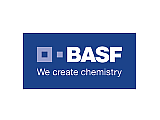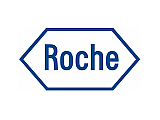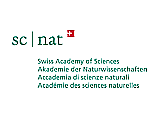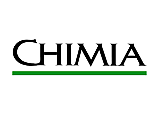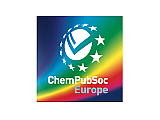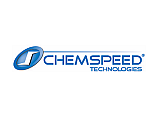|
Prof. Rebecca Buller, ZHAW, Switzerland Prof. Dr. Rebecca Buller received her Diploma degree in Chemistry from the University of Münster, Germany, and studied at the University of California in Santa Barbara. She holds a PhD degree from the Institute of Chemistry and Applied Biosciences at ETH Zurich. Currently, Prof. Buller heads the Competence Center for Biocatalysis at the Institute of Chemistry and Biotechnology, Zurich University of Applied Sciences. Before joining the ZHAW, she was Laboratory Head and Project Manager at Firmenich, a flavour and fragrance company. In this role, she developed and optimized several biocatalysis based processes for the manufacture of asset molecules. Additionally, Prof. Dr. Buller brings in-depth knowledge of enzyme engineering through her academic research at ETH Zurich.
|
|
 |
Dr. Alexey Fedorov, ETH Zurich, Switzerland Alexey Fedorov completed his undergraduate studies in chemistry in 2005 at Saint Petersburg State University, Russia, and was awarded a Ph.D in 2010 for the work on gas phase ion-molecule reactions under the mentorship of Prof. Peter Chen at the ETH Zürich. Having spent two years as a post-doc at Caltech with Prof. Robert H. Grubbs (2010−2012), he returned to Switzerland for Habilitation with Prof. Christophe Copéret focusing on applications of highthroughput experimentation in both homogeneous and heterogeneous catalysis, supported by the Holcim Stiftung and ETH Zürich.
|
|
Dr. Davide Ferri, PSI Villigen, Switzerland Davide Ferri obtained MSc in Technical Chemistry at the University of Milano (Italy) and PhD in Natural Science at ETH Zurich (Switzerland). After an employment as Sales and Application Manager at Bruker Optics (Switzerland) he moved to ETH Zurich as a senior scientist in 2006. He was a group leader in heterogeneous catalysis at the Swiss Laboratories for Material Science and Technology (Empa) from 2007 to 2012 before accepting his current senior scientist position at the Paul Scherrer Institut (PSI) since October 2012. His research interest is centered on the application of advanced in situ and operando spectroscopic techniques to catalytic materials in gas and liquid environment to obtain structure-activity relationships aiding catalyst development.
|
|
 |
Dr. Denis Gribkov, Syngenta, Switzerland Denis Gribkov studied chemistry at the Moscow State University and received a Ph.D. in organic chemistry from the University of Erlangen-Nuremberg in 2005. From 2005 to 2007 he was a postdoc at Columbia University in New York working on transition metal catalyzed C-H bond activation. From 2007 to 2008 he carried out a second postdoc at the Albert-Ludwigs-University of Freiburg in Germany. In 2008 he started his industrial career at Syngenta Crop Protection Muenchwilen AG (Switzerland) as a team leader in process chemistry. During his career at Syngenta he spent a year working as a production chemist at Syngenta’s manufacturing site in Monthey and a year at the Syngenta’s research department in Stein AG. Denis Gribkov has published more than 20 scientific papers and patents.
|
 |
Prof. Xile Hu, EPFL Lausanne, Switzerland Prof. Dr. Xile Hu obtained a B.S. degree in chemistry from Peking University in 2000 and received a Ph.D. degree in inorganic chemistry in 2004, under the guidance of Prof. Karsten Meyer at the University of California, San Diego. He then became a postdoctoral scholar in the group of Prof. Jonas C. Peters at the California Institute of Technology in 2005. In 2007, Xile Hu was appointed a tenure-track assistant professor of chemistry in the Institute of Chemical Sciences at EPFL and was promoted to associate professor (2013) and full professor (2016). Prof. Xu leads Laboratory of Inorganic Synthesis and Catalysis that develops transformations pertinent to synthesis, energy, and sustainability.
|
 |
Dr. Hans Iding, Roche, Switzerland Hans Iding graduated at the chemistry department of the RWTH Aachen University, Germany in 1995. In the research center in Jülich, Germany at the Institute of Enzyme Technology he worked on the formate dehydrogenase (NADH regeneration) and the benzoyl formate decarboxylase (ThDP dependent carboligation) receiving his PhD in 1998. Subsequently in a post doctoral position at Hoffmann-La Roche Basel he implemented an automated hydrolase screening. Since 2000 Hans has headed a biotransformation laboratory and became meanwhile Principal Scientist. In this responsibility he has to support the drug development chain from Discovery up to Development delivering chiral intermediates as well as technical biocatalysis solutions. In 2007, Hans has additionally taken over the responsibility as a chemical project leader within his department - Process Chemistry & Catalysis. Since 2016, he has been leading the biocatalysis group. His published work is described in 33 publications and 21 patents.
|
|
Prof. Núria López, ICIQ, Spain Prof. Dr. Núria López leads the group of theoretical heterogeneous catalysis at ICIQ. Her expertise is the atomistic model of materials. She has published over 160 works in the areas of Chemistry, Physics and Engineering. Her work has been supported by the EU through the ERC Starting Career award and from diverse collaborations with industries. She is a member of the Scientific Steering Committee of the European Supercomputing Initiative PRACE.
|
|
 |
Dr. Jonathan Medlock, DSM, Switzerland Jonathan Medlock studied Natural Science (Chemistry) at Cambridge University (UK) and stayed there to complete a PhD in synthetic organic chemistry with Dr Stuart Warren. He moved to Basel (Switzerland) for a Postdoctoral position with Professor Andreas Pfaltz in homogeneous catalysis. In 2002 he started his industrial career at Johnson Matthey (Cambridge, UK) in process research developing new catalysts and catalytic processes for the synthesis of pharmaceuticals and fine chemicals. In 2009 he moved to his current position as Senior Scientist and Head of the Hydrogenation Laboratories at DSM Nutritional Products (Kaiseraugst, Switzerland). His interest covers all aspects of catalytic processes for chemical production, especially homogeneous and heterogeneous hydrogenation catalysts.
|
 |
Dr. Gerhard Mestl, Clariant, Germany Dr. Mestl is being specifically recognized for his widespread established achievements in the area of industrially applied catalysts in the field of selective oxidation. Bringing the PA (phthalic anhydride) business technically to success, Gerhard continued to establish and to extend especially the coating technology to other applied catalyst systems like noble metal systems for the next generation for VAM synthesis (vinyl acetate monomer) and managed a step change in the BiMo-based propene to acrolein process. Besides this Gerhard introduced highly innovative new versions for VPO-based Maleic anhydride catalysts and contributes significantly to the versatile technology platform of MoNbVTe mixed oxides utilized soon in the field of one-step propane to acrylic acid conversion or the highly selective oxidative dehydrogenation of ethane-to-ethene feedstock.
|
 |
Dr. Cecilia Mondelli, ETH Zurich, Switzerland Cecilia Mondelli studied Chemistry at the University of Insubria (Italy) and conducted her PhD study in Chemical Sciences with Dr. R. Psaro at the University of Milan (Italy), earning her degree in 2007. She then moved to the ETH Zurich (Switzerland) to undertake activities in heterogeneous catalysis and in situ spectroscopy as a postdoctoral fellow in the group of Prof. A. Baiker. She joined the group of Prof. J. Pérez-Ramírez at the same institution, being engaged as a scientist and lecturer since 2011. Her research activities focus on the development of tailored heterogeneous catalysts able to efficiently and sustainably mediate processes to upgrade renewables into added-value chemicals and to valorize CO2 to methanol, higher alcohols, and formic acid.
|
|
Dr. Rocco Paciello, CaRLa-BASF, Germany Rocco Paciello received a B.Sc. in chemistry from MIT in 1982 and a Ph.D. from Caltech in 1987 working with Prof. John Bercaw. After 2 years as a Humboldt Fellow in TU Munich (group of Prof. W. A. Herrmann), Dr. Paciello was a Research Chemist in DuPont in Wilmington, Delaware (1989-1992) and since 1992 he has been with BASF in Ludwigshafen, Germany, where he moved through the ranks of Research Chemist, Assistant Plant Manager, Senior Research Manager to a Vice President position (homogeneous catalysis).
|
|
|
Prof. Stavros Papadokonstantakis, Chalmers University, Sweden Associate Professor, Dr. Stavros Papadokonstantakis holds a PhD degree (2006) in Chemical Engineering from the National Technical University of Athens (NTUA), Greece. From 2006 to 2014 he has held a senior research assistant position in the Safety and Environmental Technology Group in the Department of Chemistry and Applied Biosciences in ETH Zurich. In November 2014 he joined the Division of Energy Technology at Chalmers University of Technology, where his research focuses in the area of process modelling and conceptual design of energy and chemical production systems coupled to key performance indicators and multi-criteria design decision making (i.e., combining techno-economic, LCA and SHE hazard analysis towards a holistic economic and environmental sustainability assessment of the production system life cycle). He is the supervisor of 12 PhD students, participated in and/or coordinated more than 15 industrially, nationally, and EU funded research projects and he is the author of over 50 scientific papers in journals and books.
|
|
| |
Prof. Bert Sels, KU Leuven, Belgium Bert F. Sels (1972), currently full professor at KU Leuven, obtained his Ph.D. in 2000 in the field of heterogeneous oxidation catalysis under the guidance of Prof. Pierre Jacobs. He was awarded the DSM Chemistry Award in 2000, the Incentive Award by the Belgian Chemical Society in 2005, and the Green Chemistry Award in 2015. He is currently director of the Centre for Surface Chemistry and Catalysis. His research activities encompass the design of heterogeneous catalysts for the future challenges in industrial organic and environmental catalysis. He has about 290 peer reviewed papers with an h index of 68 and more than 15 000 citations, and he wrote 25 patents. His expertise includes heterogeneous catalysis in bio-refineries and biofactories, the design of hierarchical zeolites and carbons, and spectroscopic and kinetic study for identification of catalytically active sites. He is appointed active member of the Research Council of the University. He is co-chair of the Catalysis Commission of the International Zeolite Association (IZA) and co-founder of the European Research Institute of Catalysis (ERIC). He is member of the European Academy of Sciences and Arts, visiting professor in the Chinese Academy of Sciences, board member of the international advisory board of ChemSusChem (Wiley) and ChemCatChem (Wiley), and associate editor of ACS Sustainable Chemistry & Engineering.
|

